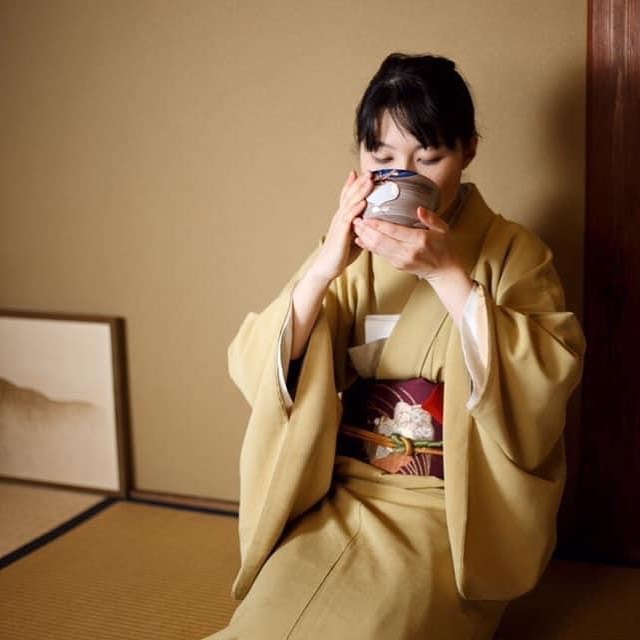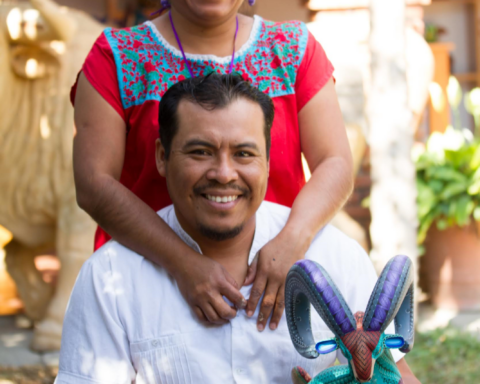Tea Ceremony KOTO is a small tea ceremony house in Kyoto, Japan.
It’s a 1-minute walk from Kinkakuji temple, one of the world heritage sites.
The founder Rie Kuranaka, a Japanese tea master, started this house to welcome guests. After receiving a license to teach the Urasenke tea ceremony, she started her own tea house to introduce Japanese traditional culture to young Japanese people and foreign guests.
*Urasenke is one of the biggest tea schools in Japan. It has over 400 years of history and many branches in the world.
From 2015 to 2019, over 15000 people from 50+ countries visited the Tea Ceremony KOTO to experience authentic Japanese tea ceremonies.
Although the traditional tea ceremony is not a very common or a daily custom for everybody in Japan, she has noticed it’s very helpful for the present generations to reset their minds to be calm and peaceful.
Entering a tea ceremony room, people can feel the ZEN spirit from the nook. A hanging scroll says, “Every day is a good day,” not about good or bad luck, but “Every day is an important precious day, any day, anytime.”

Sometimes it’ll be a private tearoom for a couple or family; sometimes, guests from various countries get together in the tearoom.
Concentrating on the moment, one can hear the sound of boiling water, wind from a little garden inside the old house, and feel gentle lights from paper shoji screens. Seeing the traditional old tea utensils, we remember the tradition inherited from our ancestors.

Even though Japan is a foreign country for travelers, they also can imagine the spirit of Zen or Wabisabi when they sit on tatami mats. Wabi-sabi means the simple or primitive beauty perfected by RIKYU SEN (1522-1591), the first grand tea master. Even though the shape or colors are not completely perfect or symmetrical, people enjoy watching and touching its natural beauty in the traditional tearoom.
The Japanese tea room serves only matcha and hot green tea without milk or sugar.
The host usually doesn’t drink together with the guests but serves them. It takes about 10-15 minutes to make one bowl of tea. The host and guests’ precise movements include the spirits, “Wa Kei Sei Jyaku.”
Wa; Peace and harmony. 15th grandmaster of Urasenke proposes “Peacefulness from a bowl of tea.”
Kei; Respect. All participants show respect for each other. Not only for people but also for the utensils, nature, and tea.
Sei; Purity. Not only cleaning the room but also purifying our hearts.
Jyaku; Tranquility. We have fewer conversations in a tearoom. In a silent moment, we can feel mindfulness.
Everyone concentrates on this moment, avoiding their daily lives, jobs, countries, or positions like samurai took off their important swords before entering a tearoom in the old days. Escape from the city’s hustle and bustle, sit on the tatami, and drink matcha together in a tearoom.
The highlight of the tea ceremony is when a host serves a bowl of tea.
The fresh green color and its natural taste refresh us.
The owner, Rie, remembers she had been moved when she joined the first-time tea ceremony when she was 22. It was a different world from a busy daily life even though it was a tearoom in the modern building. She felt like she was being taken care of when she received and drank a bowl of fresh green matcha tea. She could feel the warm heart of the host, a very experienced tea master of 90 years who had been teaching her for 12 years.
Japanese tea masters keep practicing it for life by visiting the teacher’s house weekly. Even after getting a master’s license, it’s not the end of the training.
Students gather in the new year’s tea ceremony in January and practice every week until the end of December.
To be thankful for the moment everyone meets again, some temples and shrines in Kyoto have a tea ceremony once a month, and everybody can sit in the same tearoom and watch the same utensil during that season.
A tea ceremony is a moment we can feel the preciousness of our life.
We can imagine why the samurai loved it so much. They could feel its preciousness more because they always face a life crisis.
Tea ceremony must be a valuable time to feel life and ease their mind like meditation.
Rie would wish to inherit this tea ceremony spirit and experience the precious moment in her tea ceremony house with guests worldwide.

She always keeps in mind introducing the authentic Japanese tea ceremony to foreign travelers the same as Japanese guests, using the different utensils according to the seasons with a detailed introduction in English.
Everything changes according to the seasons in a tearoom, which is the unique point of Japanese traditional culture. For example, the paintings of the tea bowls change little by little every month. The name of each small utensil, such as a bamboo teaspoon, a tea bowl, and a water container, also represents the season or message from the host.
“Ichi go ichi e” means “This moment never comes back” and “Treasure every meeting, for it will never recur.”
Meeting the travelers in the tea ceremony is just exactly like this word.
It might be a once-in-a-lifetime meeting like a cherry blossom never stays in a branch forever.
Thanks to the guests who wrote many great reviews on Trip Advisors and Online travel agents’ sites, travelers visiting Tea Ceremony KOTO increased little by little from 2015-to 2019.
With all the traveler’s and friends’ help, the owner could continue this small tea ceremony house and start new sections in the company. One is the group home, and one is the ginger farm.
Now it’s hard to find time for her job because almost all travelers can’t come from foreign countries from 2020 due to Covid. The world has changed suddenly. The highest sightseeing season of cherry blossoms has passed with no travelers for these 3 years. Few Japanese groups or one-to-one lesson students visit to learn tea ceremony in the silent, peaceful tearoom.
Rie filmed some online tea ceremonies & Ikebana & kimono lessons on Udemy and visited Japanese schools to have tea ceremony lessons as a member of NPO, maintaining the traditional culture in Kyoto.
In addition, she started a new job at a ginger farm in Fukuchiyama City, the north of Kyoto prefecture, during these hard days of COVID-19.
Why ginger? It’ll be less damaged by wild animals than other vegetables and is thought to have many health benefits. Ginger was used for 80% of herbal medicine in Japan long ago, so it’s thought to be helpful to warm the body and mind.
Rie has produced a new tea, “Ginger Hoji Japanese tea,” especially for people caring for sore throats or health.
Since ginger hoji tea includes no sugar and less caffeine, it’s also suitable to drink before drinking.

(Ginger hoji tea & matcha green tea)
Although ginger hoji tea is not connected to the traditional tea ceremony, the best blending balance was produced by a Japanese tea master. Many other tea masters enjoy this, but it’s not very common in foreign countries yet.
Rie has a dream to export this new ginger hoji tea and the organic & ceremonial KOTO matcha to foreign countries in the future.
And she is still waiting for Japan to open the gate for foreign travelers after the COVID-19 pandemic and meet the guests again.
Rie is now managing the 3 sections in Kyoto; tea ceremony house KOTO, the group home for special persons, and the ginger farm. People, climates, and world situations never stay the same. Everything changes like the seasons in Japan.
A Tea Ceremony is the opportunity to reset our minds to the neutral by concentrating on this moment, even the sad and hard times. She thinks it’s necessary, especially when struggling with a hard experience.
We can feel the important essence of easing our spirits by making a bowl of tea following the same steps as 400 years ago. Since modern life flies fast with useful machines or IT systems, we sometimes need an opposite environment. It might be what we call “mindfulness” nowadays.
Some businesspersons also try to include a tea ceremony for meditation, which is thought to be effective in creating new ideas or reducing our stress.
Since we don’t need special words during the way of tea, everyone from all over the world might be able to feel it.
Tea Ceremony KOTO https://teaceremony-kyoto.com
Kyoto ginger hoji tea https://shouga-ginger-kyoto.com/2022/04/04/non-pesticide-ginger-made-in-kyoto-japan/
- WHY CAN DRINKING ALCOHOL TRIGGER ANXIETY? - January 7, 2023
- WHAT IS ORGASMIC MEDITATION? BENEFITS + HOW TO - January 7, 2023
- THE BEST WAYS TO PREVENT WEIGHT GAIN THIS WINTER - January 6, 2023






